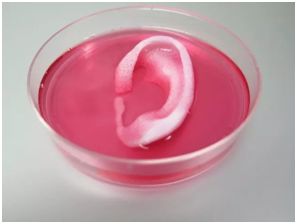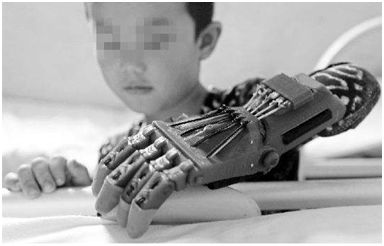What can 3D printing do? Can it print a living heart?
What can 3D printing do? Can it print a living heart? Can it replicate the human body one-to-one? Or is it just a gimmick?
NO! NO! NO! All of the above are incorrect!
Today, we have invited a scientific expert along with his startup to revolutionize everyone’s understanding of 3D printing.
Is the craze over, or is the direction wrong?
Two years ago, the concept of 3D printing was just gaining popularity, and many believed this field had great potential. Numerous startups emerged, with some attempting to create consumer products. However, a 15 cm figurine costing 600 yuan was simply too expensive for consumers. Meanwhile, companies targeting the B2B market struggled to launch due to issues with printing precision. Once the precision problem is solved, the high cost of machines poses another challenge for enterprises.

*3D printed figurines once became a trend
In the past two years, many 3D printing companies have gone bankrupt. Earlier this year, two American desktop 3D printing companies, New Matter and Type A Machines, announced they would cease operations.
Although the 3D printing industry has begun to cool down, one application area has seen a resurgence: medical 3D printing.
Entrepreneurs in the bubble mistakenly believed that having machines would create demand, but the medical field is different; it is clinical needs that drive 3D printing technology.
Doctor, can you print me a living heart?
Li Jianbo, founder of Yingwei Medical, told us that when friends learned he was involved in medical 3D printing, they asked if he could print living organs. Li Jianbo felt helpless; perhaps due to watching too many sci-fi movies, many people misunderstand medical 3D printing this way.
In fact, bioprinting is still in the research and development stage. Although some teams have developed technologies for printing living cells, tissues like nerves and blood vessels can be 3D printed, but to achieve industrial-scale application will take a long time.
*Anthony Atala’s team at Wake Forest University has used a new type of 3D bioprinter to create living tissue: human ears
What you see in 3D printing is just the tip of the iceberg
If we cannot print living organs, what can medical 3D printing do?
In fact, most people only see 10% of medical 3D printing; the remaining 90% is more about digital medicine. By restoring a patient’s 1:1 real data, preoperative planning can be improved, reducing intraoperative risks. This is also a role of 3D printing. If in the past, doctors performed surgeries based on experience, the introduction of 3D imaging significantly reduces the risks associated with lack of experience.
Moreover, more importantly, 3D printing can solve problems caused by irregular hard tissue defects. Before the advent of 3D printing technology, these patients might face the risk of paralysis. The medical device industry is highly regulated, and all devices have specifications. Irregular hard tissue defects cannot find suitable prosthetic solutions, but with 3D printing, all of this can be resolved.
Li Jianbo told us that many people in China prefer to choose imported prosthetics, but the data used for these imported prosthetics often comes from foreigners, which does not match domestic patients. The emergence of 3D printing can produce prosthetics that fit patients perfectly.

It sounds great, but how expensive is it?
One word: expensive.
The machines are expensive, the raw materials are expensive, and since there is currently no mass production, the price for individual cases is certainly high. Excluding complex cases, for an ordinary patient, spending several tens of thousands more to use 3D printing technology does seem a bit unreasonable.
Currently, China has not yet established corresponding approval systems, and there are no price standards for medical 3D printing in terms of pricing and medical insurance. This is also a concern for many medical 3D printing companies.
However, at the end of last year, the Ministry of Industry and Information Technology, the National Development and Reform Commission, and the National Health and Family Planning Commission, among twelve departments, jointly issued the “Additive Manufacturing Industry Development Action Plan (2017-2020)”, which proposed the demonstration application of “3D printing + medical”.

Li Jianbo from Yingwei Medical said that when he saw this news, he finally breathed a sigh of relief; the future of medical 3D printing has hope again.
Director: Ge Yan, Cinematography: Lu Jun, Sun Jia, Post-production: Luo Guan
